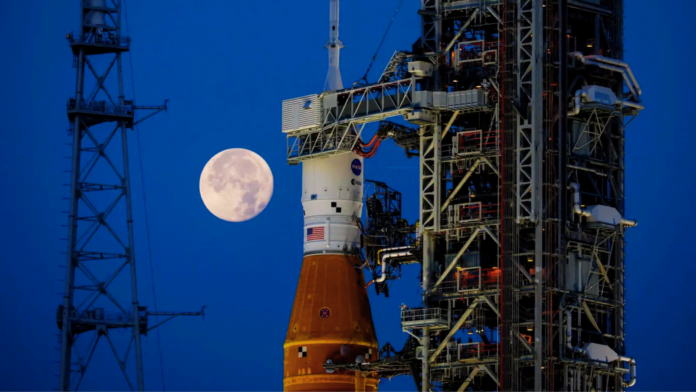In the world of space exploration, a group of visionary pioneers, formerly of Blue Origin, is charting a new course with Interlune, a startup on a mission to revolutionize how we harness the moon’s resources. With a fresh injection of $15.5 million in funding, raising the stakes with an additional $2 million on the horizon, Interlune is stepping out of the shadows, signaling a bold leap towards sustainable space economy goals.
Interlune remains a beacon of innovation, despite its preference for discretion over the past three years. The company’s journey, beginning with a modest $1.85 million seed round in 2022, is now gaining momentum, drawing attention and curiosity from the space industry and beyond.
At the core of Interlune’s vision, as shared by CTO Gary Lai, is a groundbreaking approach to lunar resource extraction. Speaking at a rare public appearance in Seattle’s Museum of Flight, Lai outlined a future where the moon’s natural resources could be utilized both in space and on Earth. “Our goal,” he explained, “is to spearhead the creation of a sustainable in-space economy, deploying innovative techniques to extract lunar resources efficiently, cost-effectively, and responsibly.”
Lai, with two decades of experience at Blue Origin culminating as the chief architect for space transportation systems, brings unparalleled expertise to Interlune. Under the leadership of Rob Meyerson, another Blue Origin alum with 15 years as president and a portfolio of investments in aerospace startups, Interlune is well-positioned at the industry’s cutting edge. The team is rounded out by H. Indra Hornsby, an accomplished attorney with deep roots in the space industry through roles at BlackSky, Spaceflight Industries, and Rocket Lab.
Interlune’s technological ambitions are as fascinating as they are ambitious. The company has secured a small but significant SBIR award from the National Science Foundation, targeting a core challenge of lunar exploration: sorting lunar regolith, or moon dirt, by particle size. This capability is crucial, offering the raw materials needed for lunar oxygen extraction, 3D printing on the moon, and various other applications critical for long-term space missions.
This focus on in-situ resource utilization (ISRU) reflects a broader industry trend towards leveraging space resources. With NASA’s Artemis program aiming to establish a sustainable human outpost on the moon, the importance of ISRU technologies cannot be overstated. These technologies promise to transform space exploration, enabling humans to “live off the land” by generating essential materials locally, from construction materials to life-supporting oxygen and even rocket propellants.
Interlune’s journey parallels industry giants like Blue Origin, which recently showcased its ability to produce solar cells and transmission wires from lunar regolith-analog materials. This collective movement towards mastering ISRU technologies underscores a shared vision for a future where space resources fuel further exploration and habitation.
As Interlune advances, it embodies the spirit of collaboration and innovation necessary to tackle the challenges of space resource utilization. Their work not only paves the way for groundbreaking missions but also contributes to a sustainable framework for future generations of space explorers, making the dream of living off the land beyond Earth a closer reality.












